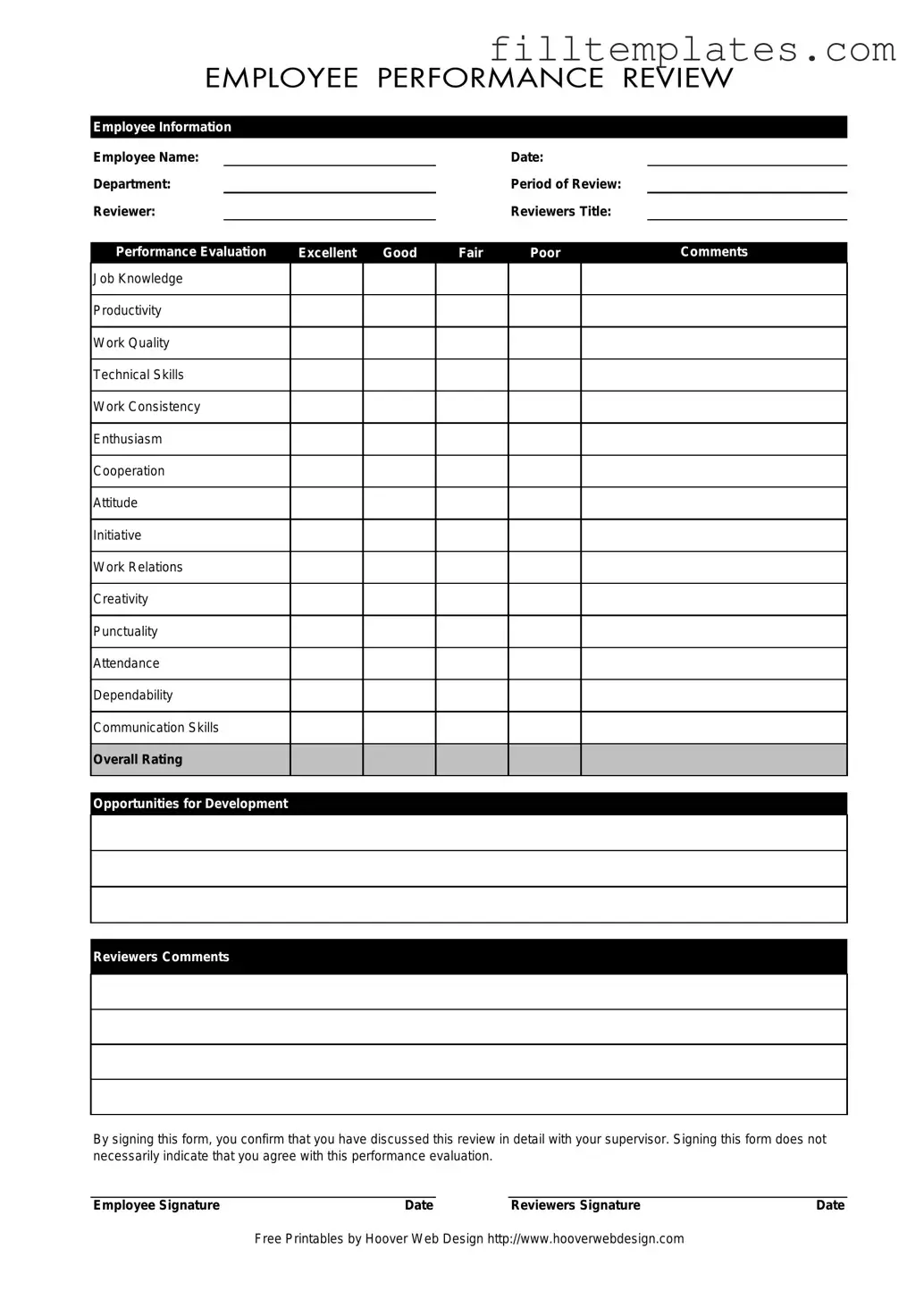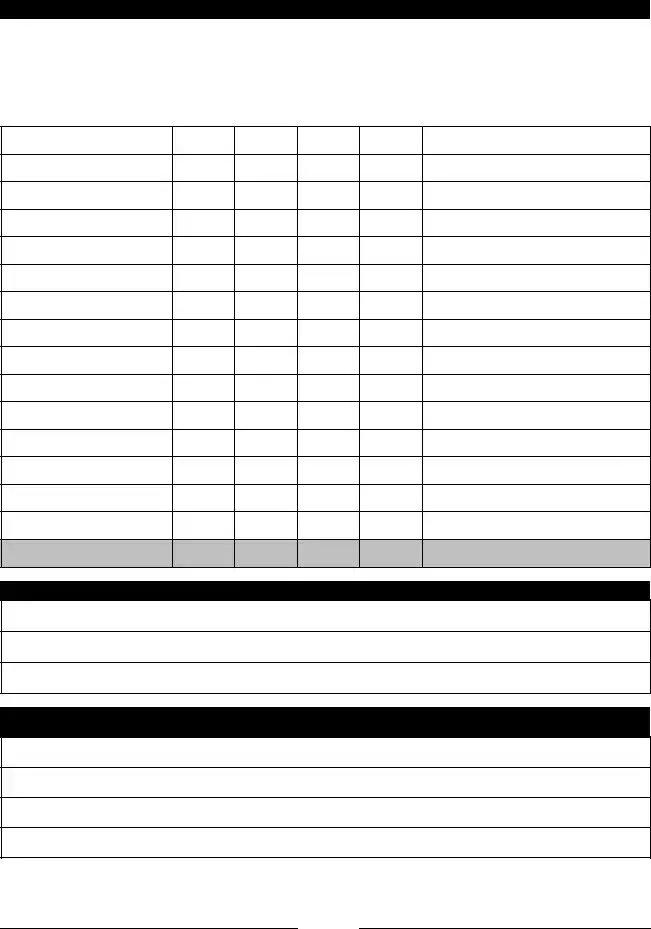The Employee form serves as a crucial tool in the performance evaluation process, allowing both employees and supervisors to engage in meaningful dialogue about job performance and development. This form captures essential employee information, including the employee's name, department, and the period under review, ensuring that all evaluations are contextually relevant. It also identifies the reviewer and their title, which adds a layer of accountability to the assessment. The performance evaluation section is comprehensive, covering various aspects such as job knowledge, productivity, work quality, and communication skills. Each category is rated on a scale from excellent to poor, allowing for a nuanced understanding of an employee's strengths and areas for improvement. Additionally, opportunities for development are highlighted, giving employees clear insights into how they can enhance their skills and contributions. The form concludes with a section for comments from both the reviewer and the employee, fostering an open dialogue about the evaluation. Importantly, the signatures at the end signify that the review has been discussed in detail, although signing does not imply agreement with the evaluation itself. This structure not only promotes transparency but also encourages a collaborative approach to performance management.

